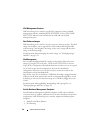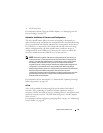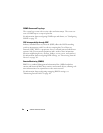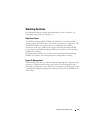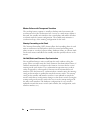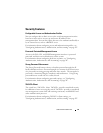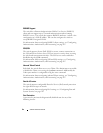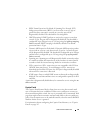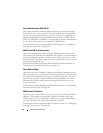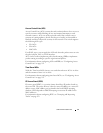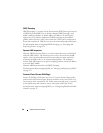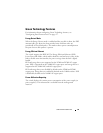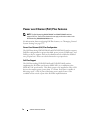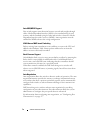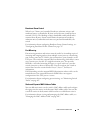
66 Switch Feature Overview
Dot1x Authentication (IEEE 802.1X)
Dot1x authentication enables the authentication of system users through a
local internal server or an external server. Only authenticated and approved
system users can transmit and receive frames over the port. Supplicants are
authenticated using the Extensible Authentication Protocol (EAP). PEAP,
EAP-TTL, EAP-TTLS, and EAP-TLS are supported for remote authentication
servers. Local (IAS) authentication supports EAP-MD5 only.
For information about configuring IEEE 802.1X settings, see "Configuring
Port and System Security" on page 503.
MAC-Based 802.1X Authentication
MAC-based authentication allows multiple supplicants connected to the
same port to each authenticate individually. For example, a system attached
to the port might be required to authenticate in order to gain access to the
network, while a VoIP phone might not need to authenticate in order to send
voice traffic through the port.
For information about configuring MAC-based 802.1X authentication, see
"Configuring Port and System Security" on page 503.
Dot1x Monitor Mode
Monitor mode can be enabled in conjunction with Dot1x authentication to
allow network access even when the user fails to authenticate. The switch logs
the results of the authentication process for diagnostic purposes. The main
purpose of this mode is to help troubleshoot the configuration of a Dot1x
authentication on the switch without affecting the network access to the
users of the switch.
For information about enabling the Dot1X Monitor mode, see "Configuring
Port and System Security" on page 503.
MAC-Based Port Security
The port security feature limits access on a port to users with specific MAC
addresses. These addresses are manually defined or learned on that port.
When a frame is seen on a locked port, and the frame source MAC address is
not tied to that port, the protection mechanism is invoked.
For information about configuring MAC-based port security, see "Configuring
Port and System Security" on page 503.



